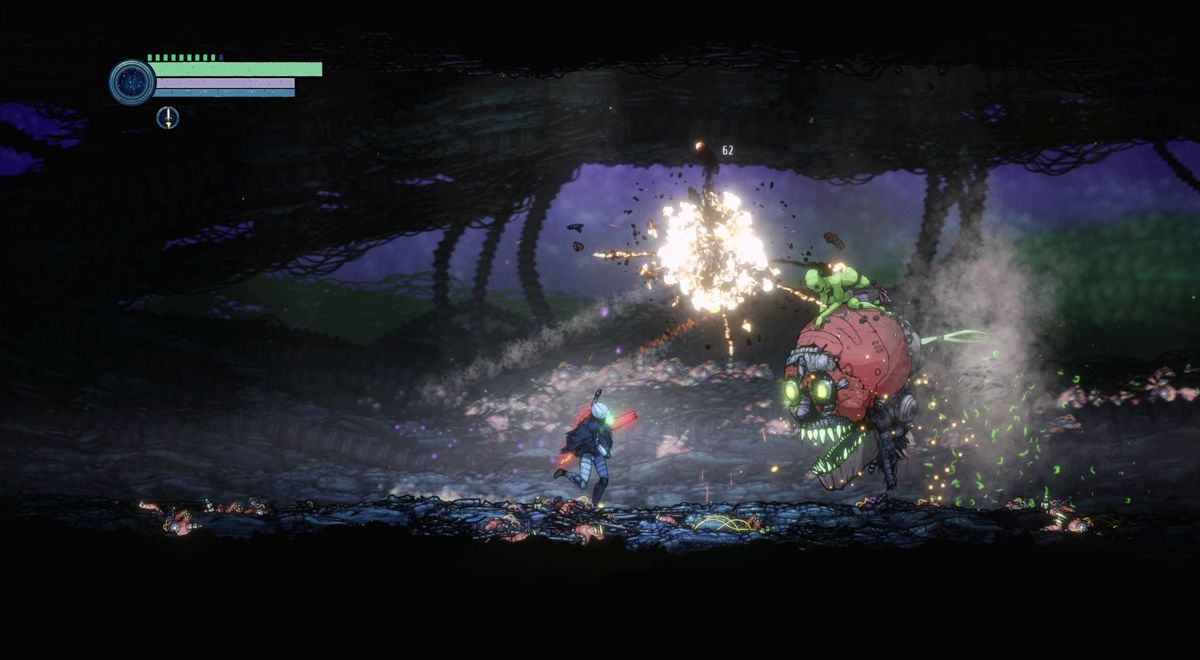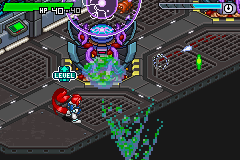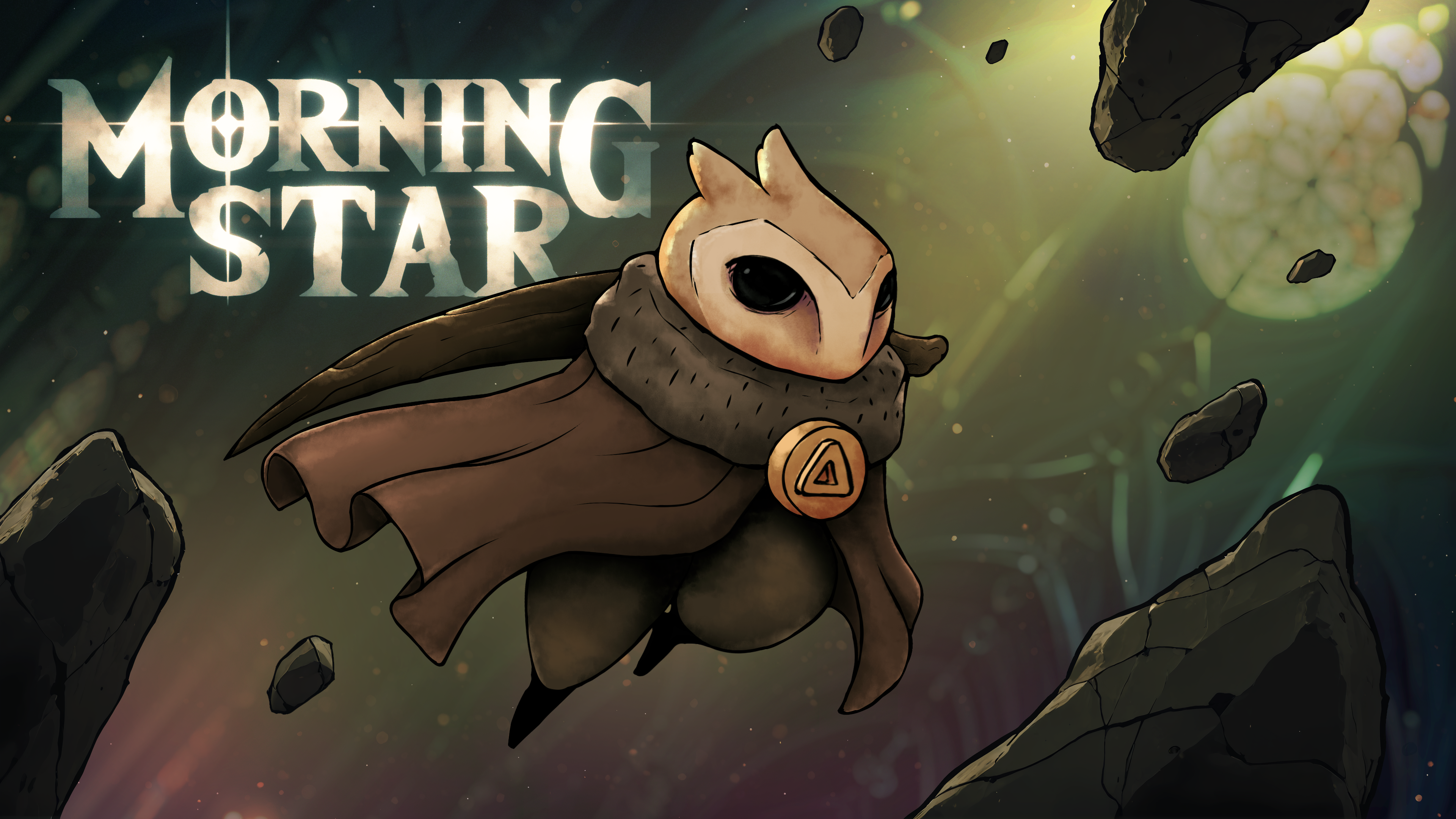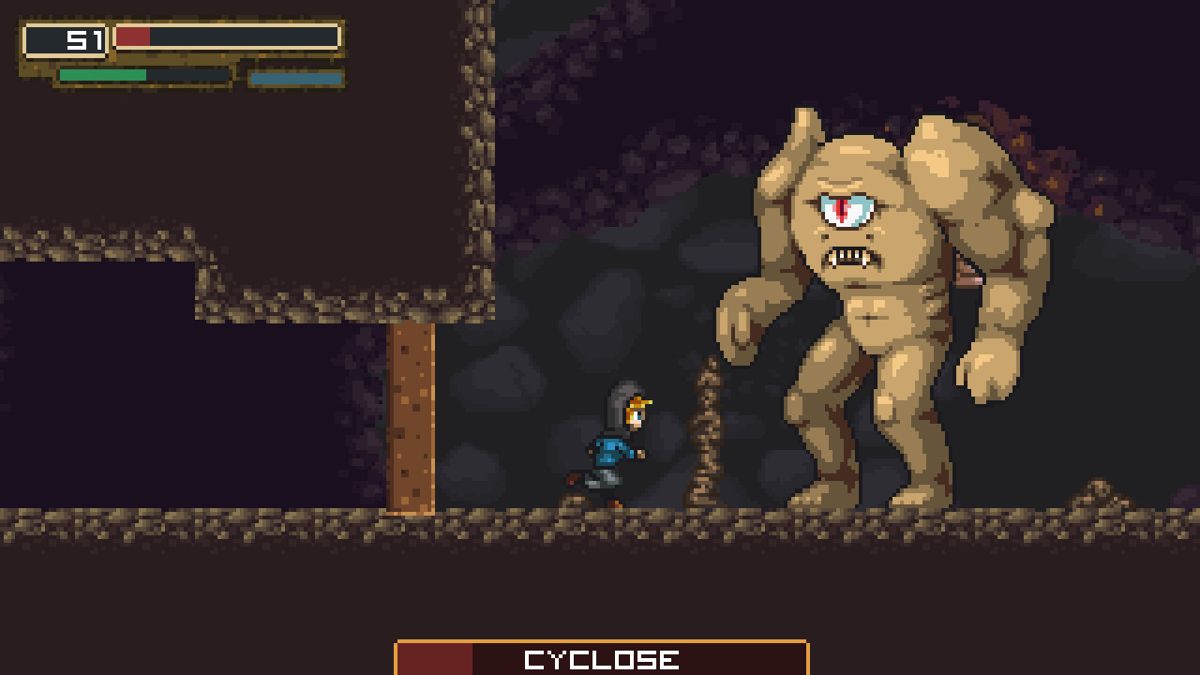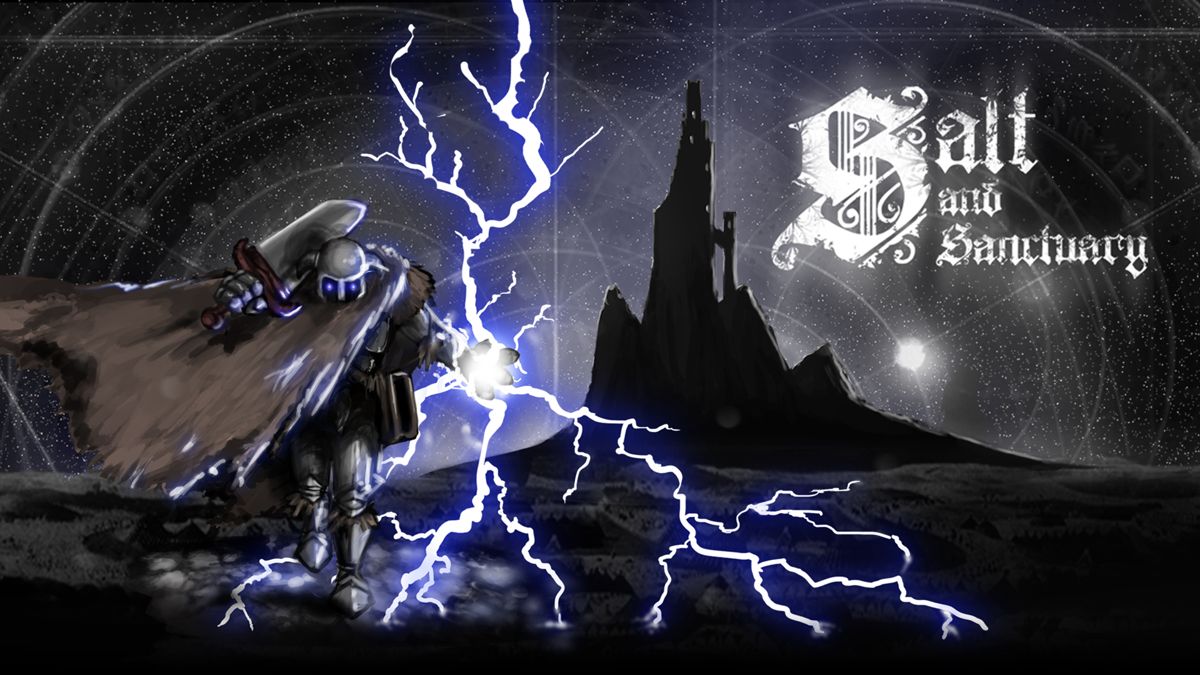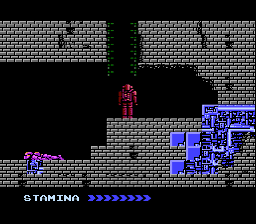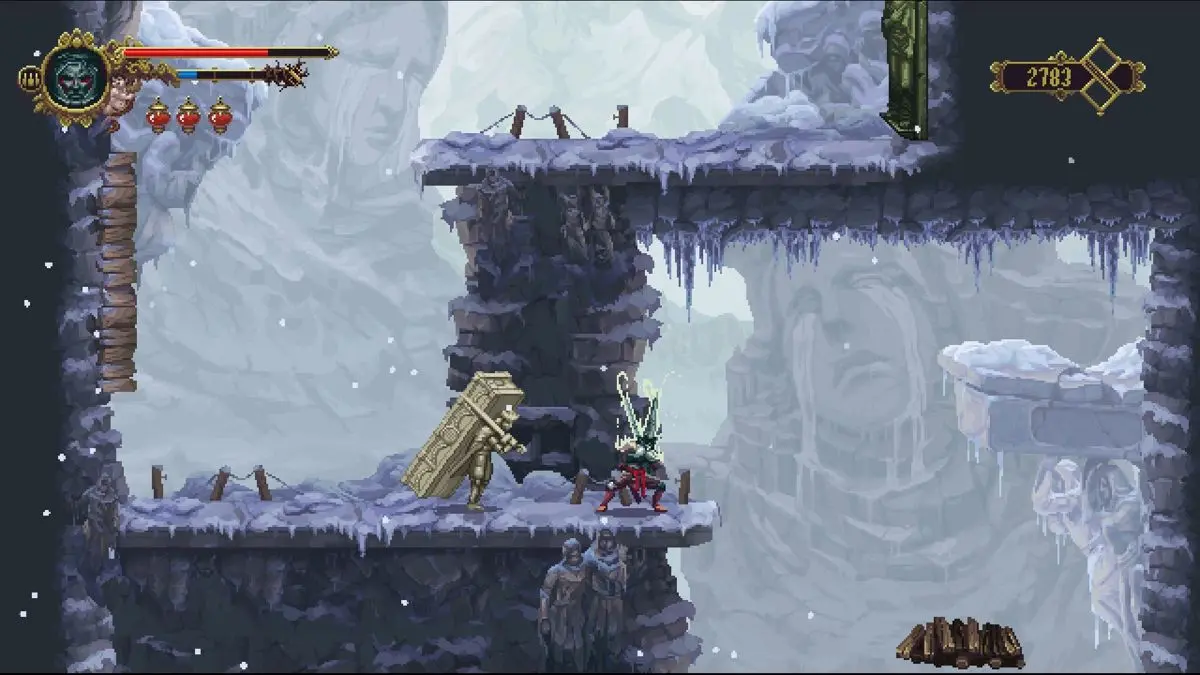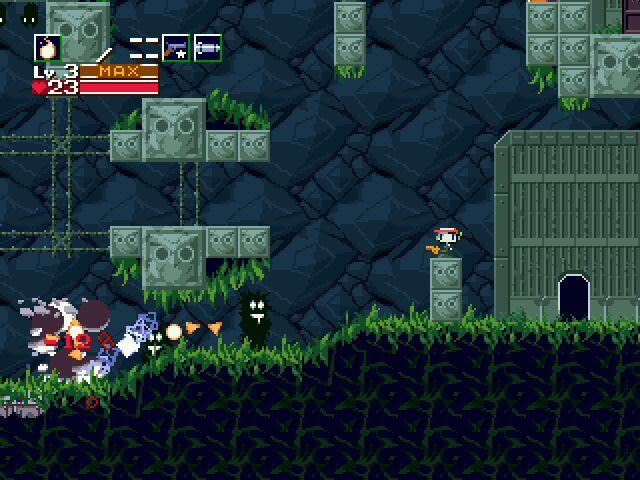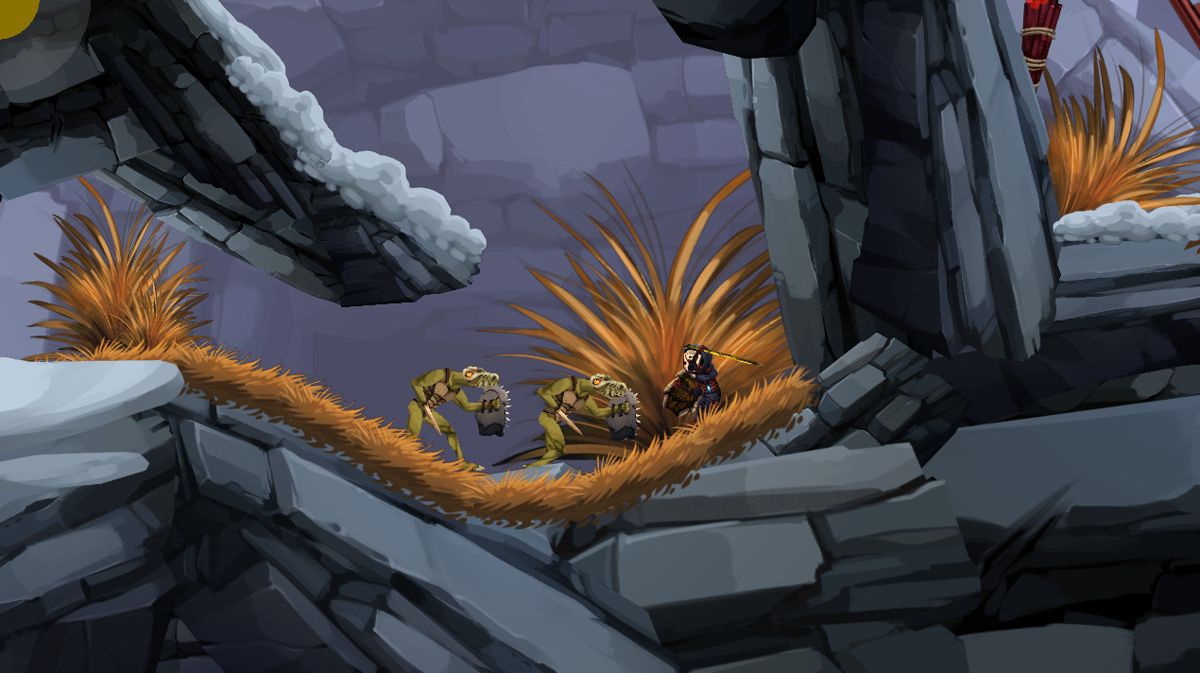Results
Bloodstained: Ritual of the Night
igavania, grindy, hidden areas
Bloodstained: Ritual of the Night is a critically acclaimed Metroidvania-style action-adventure game developed by Koji Igarashi, the godfather of the Igavania subgenre. Drawing inspiration from his work on the iconic Castlevania series, Igarashi has crafted a meticulously designed game that pays homage to the genre's roots while introducing fresh mechanics and elements. The game stands out for its intricate level design, featuring a vast and interconnected castle filled with labyrinthine passages, hidden rooms, and secret shortcuts. Exploration is rewarded with a wealth of power-ups, weapons, and equipment, allowing players to backtrack and access previously inaccessible areas in true Metroidvania fashion. Combat is a central pillar of the experience, with a diverse array of enemies that require strategic positioning and skillful use of various weapons and abilities. Bloodstained boasts a vast arsenal, including swords, spears, whips, and a variety of magical abilities, each with its own unique properties and attack patterns. One of the game's standout features is the Shard system, which allows players to equip and mix-and-match various abilities and passive bonuses, creating unique character builds tailored to their playstyle. This system adds depth and replayability, encouraging experimentation with different shard combinations. Visually, the game showcases a stunning art style, with meticulously crafted backgrounds that capture the gothic horror atmosphere. The attention to detail in the character designs and enemy animations is truly impressive, evoking a sense of nostalgia while maintaining a distinct and modern aesthetic. Overall, Bloodstained: Ritual of the Night is a must-play for fans of the Metroidvania genre, offering a challenging and rewarding experience that pays homage to its roots while introducing fresh ideas and mechanics that solidify its place as a modern classic.
Ghost Song
igavania, sci-fi, challenging
Ghost Song is a Metroidvania-style game developed by Old Moon and published by Humble Games in 2022. Here are some key aspects of the game: 1. Setting: The game takes place on the desolate moon of Lorian, featuring a mysterious and atmospheric sci-fi environment with bio-mechanical elements. 2. Narrative: The story follows a female protagonist who awakens from a long slumber with no memory of her past. The narrative unfolds through environmental storytelling and interactions with other characters. 3. Combat system: Ghost Song features a unique blend of ranged and melee combat. The protagonist's arm cannon can be charged for more powerful shots, and there's a risk-reward system where players can sacrifice health for increased firepower. 4. Upgrade system: Rather than traditional experience points, the game uses a "Nanogel" system for upgrades. Players can choose to enhance either their health or weapon energy, creating a strategic element to character progression. 5. Sound design: The game features an atmospheric soundtrack that adapts to different areas and situations, enhancing the eerie and isolated feel of the moon. 6. Boss design: Bosses in Ghost Song are often large, intimidating creatures that require learning attack patterns and exploiting weaknesses to defeat. 7. Interconnected world: The map design features multiple paths and shortcuts, encouraging exploration and backtracking with new abilities. 8. Visual style: The game employs a hand-drawn art style with detailed backgrounds and character designs, mixing organic and mechanical elements. 9. Difficulty balance: Ghost Song aims for a challenging but fair difficulty curve, with save points strategically placed before difficult encounters. 10. Hidden lore: Much of the game's backstory and world-building is tucked away in optional areas and interactions, rewarding thorough exploration. Ghost Song stands out in the Metroidvania genre with its unique setting, atmospheric storytelling, and blend of combat styles, offering a fresh take on familiar gameplay mechanics.
Scurge: Hive
sci-fi, challenging, varied biomes
Scurge: Hive, released in 2006, is a third-person shooter game developed by Tragical and published by Kheops Studio. While it shares some standard elements with other games in the action-horror genre, Scurge: Hive sets itself apart with its distinct atmosphere and gameplay mechanics. The game takes place in a dystopian, post-apocalyptic world overrun by a mysterious alien infestation known as the "Hive." The player assumes the role of a mercenary tasked with navigating through this hostile environment, battling against hordes of grotesque, mutated creatures. One of the standout features of Scurge: Hive is its emphasis on ammo and resource management. Ammunition is scarce, forcing players to carefully plan their attacks and prioritize headshots for maximum efficiency. Additionally, the game introduces a unique "nano-forge" system, which allows players to craft and upgrade their weapons using materials scavenged from the environment. The game's level design is noteworthy, with intricate and interconnected environments that encourage exploration and backtracking. Players must navigate through claustrophobic corridors, dilapidated buildings, and underground tunnels, all while fending off relentless enemy attacks from multiple angles. Scurge: Hive's combat mechanics are intense and unforgiving. Enemies exhibit intelligent behavior, often flanking or overwhelming the player with sheer numbers. The game also features a dynamic damage system, where different body parts can be targeted and dismembered, adding a brutal layer of realism to the combat. While the game's graphics may have aged, the atmospheric design and sound design still hold up remarkably well. The eerie, industrial soundscape and unsettling ambient noises contribute to the game's overall sense of dread and tension. Despite its niche status, Scurge: Hive has garnered a dedicated cult following among fans of the action-horror genre, particularly those who appreciate its challenging gameplay, resource management elements, and uncompromising difficulty.
Morning Star
wall jump, challenging, collectibles
Morning Star is an atmospheric Metroidvania that plunges you into a mysterious world filled with both haunting darkness and breathtaking beauty. As a cloaked figure with no memory of your past, you wield a powerful weapon and embark on a journey through a vast, interconnected realm. Along the way, you'll uncover secrets, confront terrifying creatures, and piece together a story that forces you to question your identity.h
Inexistence
environmental storytelling, mysterious, dark
Inexistence (2016) is a narrative-driven, first-person psychological horror game developed by Ninja Theory. Set in a surreal and ever-changing nightmare world, the game explores themes of trauma, mental illness, and the fragility of the human psyche. One of the game's standout features is its dynamic environment, which constantly shifts and distorts in response to the player's actions and emotional state. The game employs a unique "fracture" mechanic, where the very fabric of reality fractures and warps, creating unsettling and haunting scenarios that challenge the player's perception of reality. The game's narrative is non-linear and fragmented, reflecting the protagonist's fractured psyche. Players must piece together the protagonist's past and unravel the underlying mystery behind their harrowing experiences through environmental storytelling and cryptic clues scattered throughout the nightmarish landscapes. Inexistence is renowned for its atmospheric sound design and haunting score, which heighten the sense of dread and unease. The game's visual style is a blend of photorealistic and surreal elements, creating a disorienting and oppressive atmosphere that keeps players on edge. One of the game's most distinctive features is its lack of traditional combat mechanics. Instead, players must navigate the ever-changing environments and confront their deepest fears through exploration, puzzle-solving, and careful observation of their surroundings. Inexistence received critical acclaim for its innovative approach to storytelling, immersive atmospheric design, and thought-provoking exploration of mental health themes. However, some critics noted that its abstract nature and lack of clear objectives could be off-putting for players seeking a more traditional narrative experience.
Salt and Sanctuary
platformer, low fantasy, high fantasy
Salt and Sanctuary is a challenging 2D action-platformer with a deep, interconnected world and Souls-like combat. Players must navigate a mysterious, hand-drawn world, overcome treacherous foes, and uncover the secrets of a forgotten land.
Relics: Ankoku Yosai
dark, melancholy, horror
Relics: Ankoku Yosai, released in 1987 for the MSX2 and later ported to other platforms, is a unique and ambitious action-adventure game that stands out in the crowded genre of its time. Developed by Nihon Falcom, the game is set in a post-apocalyptic world where humanity has been nearly wiped out by a cataclysmic event, and the player takes on the role of a lone survivor tasked with unraveling the mysteries of the past and finding a way to restore the world. One of the game's standout features is its non-linear exploration and level design. Players are free to navigate the vast, interconnected world at their own pace, with multiple paths and secrets to uncover. The game encourages backtracking and revisiting previously explored areas as new abilities and items are obtained, adding depth and replayability to the experience. The combat system in Relics: Ankoku Yosai is also noteworthy. While it features traditional action-adventure combat mechanics, it also incorporates RPG elements such as character progression, equipment management, and a unique skill system. Players can learn and upgrade various abilities, allowing for strategic customization of their character's playstyle. The game's narrative is delivered through a combination of in-game events, environmental storytelling, and optional side quests and interactions. The world is rich with lore and mystery, and players are encouraged to piece together the narrative through exploration and discovery. Additionally, Relics: Ankoku Yosai features an impressive soundtrack that complements the game's atmospheric and often haunting environments. The music shifts seamlessly between different tracks, creating a dynamic and immersive audio experience. Despite its age, Relics: Ankoku Yosai is often praised for its ambitious design, compelling storytelling, and innovative gameplay mechanics that set it apart from its contemporaries. It is considered a cult classic among fans of the action-adventure genre and a notable entry in Nihon Falcom's catalog of games.
Blasphemous
platformer, low fantasy, grindy
Blasphemous is a challenging and atmospheric 2D action-platformer set in the dark, gothic world of Orthodoxia. Players take on the role of the Penitent One, a mysterious and tormented figure, on a quest to uncover the secrets of the Miracle and put an end to the endless cycle of death and rebirth.
Cave Story
pixel art, environmental puzzles, interconnected world
Cave Story, the critically acclaimed indie platformer developed by Daisuke "Pixel" Amaya, is a meticulously crafted masterpiece that transcends its humble beginnings as a freeware title. While it may seem like a quintessential 2D action-platformer on the surface, Cave Story's true brilliance lies in its intricate world-building, emotionally resonant storytelling, and nuanced gameplay mechanics. The game's narrative unfolds through a compelling blend of text-based dialogue and environmental storytelling, delving into thought-provoking themes of existentialism, the consequences of scientific experimentation, and the inherent value of life itself. The characters, from the amnesiac protagonist Quote to the endearing cast of supporting characters, are richly developed and imbued with distinct personalities that evoke genuine emotional investment. Beneath its charming 8-bit aesthetic, Cave Story boasts a remarkably intricate and interconnected world that rewards exploration and encourages backtracking. The intricate level design seamlessly incorporates multiple pathways, secret areas, and hidden collectibles, ensuring that no playthrough feels identical. The game's pacing is expertly balanced, offering moments of intense action punctuated by puzzles that require careful observation and clever problem-solving. Combat in Cave Story is a delicate dance of positioning, resource management, and split-second decision-making. The game's arsenal of weapons, each with its own unique properties and applications, adds depth to the combat encounters, forcing players to strategize and adapt their approach based on the situation. The boss battles, in particular, are standout experiences that demand mastery of the game's mechanics and a keen understanding of enemy patterns. What truly sets Cave Story apart, however, is its ability to evoke a sense of wonder and nostalgia within its players. Amaya's masterful pixel art and chiptune soundtrack capture the essence of classic gaming while infusing it with a modern sensibility. The game's attention to detail and commitment to quality shine through in every aspect, from the meticulously crafted environments to the subtle nuances of the gameplay mechanics. For those familiar with the genre, Cave Story is a must-play experience that serves as a testament to the enduring power of indie game development and the ability of a single creator to craft a truly unforgettable gaming experience.
Oblitus
fantasy, grindy, environmental puzzles
Oblitus is a psychological horror adventure game developed byRaz Games and released in 2015. Set in a surreal and unsettling dreamscape, the game explores themes of trauma, repressed memories, and the subconscious mind. The game distinguishes itself from typical horror fare by eschewing jump scares and overt violence in favor of a more cerebral and atmospheric approach. The narrative unfolds through symbolism and environmental storytelling, leaving much of the interpretation up to the player's perception and analysis. One of the standout features of Oblitus is its striking visual design, which employs a distinct, hand-drawn art style that blends elements of realism and abstraction. The environments are meticulously crafted and rich with symbolic imagery, inviting players to scrutinize every detail for clues and hidden meanings. The gameplay itself is primarily focused on exploration and puzzle-solving, with the puzzles often requiring lateral thinking and a keen eye for detail. The game also employs unconventional mechanics, such as the ability to manipulate and distort the environment in specific ways, adding to the surreal and unsettling atmosphere. What sets Oblitus apart from many other horror games is its emphasis on psychological depth and introspection. The game encourages players to engage with their own emotions and confront their own fears and psychological states, making it a thought-provoking and potentially cathartic experience for those willing to delve into its layers of symbolism and metaphor. Overall, Oblitus stands out as a unique and ambitious contribution to the horror genre, offering a cerebral and introspective experience that challenges players to confront their own psyche while navigating a hauntingly beautiful and deeply symbolic world.
Filters
Search Term
Properties
Platforms
Tags (include)
Tags (exclude)
Get Your Game Noticed
Advertise your game with MetroidvaniaDB and reach a community of people who know exactly what they're looking for:
Your game.
Native & Banner Ad Spots
Multi-week Discounts
Game Launch Packages
Discounts for Indie Developers


